Eleven Collages
John Ashbery
John Ashbery made a few collages in the 1940s while he was a student at Harvard. He made several more in the 1970s. Some of those were lost and then, years later, found in a shoebox. Others were thrown out. In 2008 he returned to collage work—making many of the pieces featured here, most of which are no bigger than a three-by-five card, although the largest, Chutes and Ladders II, is the size of a game board. Collage is an art of time, like poetry. Ashbery’s collages are both demonstrations of this fact and analyses of it. The background elements often depict possible pasts: people on go-carts, a scene in Rotterdam of men in bowlers, and the teetering, top-heavy trucks of the twenties. The foreground elements seem to express Ashbery’s elation or relief at having escaped those pasts to make the art he has made and keeps making. Some of these collages were assembled from elements given to Ashbery on his birthdays by his friend, the artist and writer Joe Brainard. Brainard died in 1994. These collages are a collaboration across decades: like Ashbery’s poems, they are a way of keeping time an open question.
—Dan Chiasson
![]() Summer Dream
Summer Dream![]() Rotterdam
Rotterdam![]() Northern Lights
Northern Lights![]() Other Traditions
Other TraditionsAshbery, John
One of the greatest living poets in English here explores the work of six writers he often finds himself reading “in order to get started” when writing. Among those whom Ashbery reads at such times are John Clare, Thomas Lovell Beddoes, Raymond Roussel, John Wheelwright, Laura Riding, and David Schubert. Less familiar than some, under Ashbery’s scrutiny these poets emerge as the powerful but private and somewhat wild voices whose eccentricity has kept them from the mainstream—and whose vision merits Ashbery’s efforts, and our own, to read them well.
2011.3
American poet who is one of the original New York School writers, noted for his formal experimentation and connection to visual art. He won a Pulitzer Prize for
Self-Portrait in a Convex Mirror (1975).
Life
Ashbery was born in
Rochester,
[6]New York, and raised on a farm near
Lake Ontario; his brother died when they were children.
[7] Ashbery was educated at
Deerfield Academy. At Deerfield, an all-boys school, Ashbery read such poets as
W. H. Auden and
Dylan Thomas, and began writing poetry. One of his poems was published in
Poetry magazine, although under the name of a classmate who had submitted it without Ashbery's knowledge or permission. He also published a handful of poems, including a sonnet about his frustrated love for a fellow student, and a piece of short fiction in the school newspaper, the
Deerfield Scroll. His first ambition was to be a painter. From the age of 11 until he was 15 Ashbery took weekly classes at the art museum in Rochester.
Ashbery graduated in 1949 with an A.B.,
cum laude, from
Harvard College, where he was a member of the
Harvard Advocate, the university's literary magazine, and the
Signet Society. He wrote his senior thesis on the poetry of
W. H. Auden. At Harvard he befriended fellow writers
Kenneth Koch,
Barbara Epstein, V. R. Lang,
Frank O'Hara and
Edward Gorey, and was a classmate of
Robert Creeley,
Robert Bly and
Peter Davison. Ashbery went on to study briefly at
New York University, and received an M.A. from
Columbia in 1951.
After working as a
copywriter in
New York from 1951 to 1955,
[8] from the mid-1950s, when he received a
Fulbright Fellowship, through 1965, Ashbery lived in
France. He was an editor of the 12 issues of
Art and Literature (1964–67) and the
New Poetry issue of
Harry Mathews's
Locus Solus (# 3/4; 1962). To make ends meet he translated French murder mysteries, served as the art editor for the European edition of the
New York Herald Tribune and was an art critic for
Art International (1960–65) and a Paris correspondent for
Art News (1963–66), when Thomas Hess took over as editor. During this period he lived with the French poet Pierre Martory, whose books
Every Question but One (1990),
The Landscape Is behind the door (1994) and
The Landscapist he has translated (2008), as he has
Jean Perrault (
Camouflage),
Max Jacob (
The Dice Cup),
Pierre Reverdy and
Raymond Roussel. After returning to the United States, he continued his career as an
art critic, for
New York and
Newsweek magazines, while also serving on the editorial board of
ARTNews until 1972. Several years later, he began a stint as an editor at
Partisan Review, serving from 1976 to 1980.
During the fall of 1963, Ashbery became acquainted with
Andy Warhol at a scheduled poetry reading at the Literary Theatre in New York. He had previously written favorable reviews of Warhol's art. That same year he reviewed Warhol's
Flowers exhibition at Galerie Illeana Sonnabend in Paris, describing Warhol's visit to Paris as "the biggest transatlantic fuss since
Oscar Wilde brought culture to
Buffalo in the nineties." Ashbery returned to New York near the end of 1965 and was welcomed with a large party at
the Factory. He became close friends with poet
Gerard Malanga, Warhol's assistant, on whom he had an important influence as a poet.
In the early 1970s, Ashbery began teaching at Brooklyn College, where his students included poet
John Yau. In the 1980s, he moved to
Bard College, where he was the Charles P. Stevenson, Jr., Professor of Languages and Literature, until 2008, when he retired; since that time, he has continued to win awards, present readings, and work with graduate and undergraduates at many other institutions. He was the
poet laureate of New York state from 2001 to 2003, and also served for many years as a chancellor of the
Academy of American Poets. He serves on the contributing editorial board of the literary journal
Conjunctions. He was a Millet Writing Fellow at
Wesleyan University, in 2010, and participated in Wesleyan's Distinguished Writers Series.
[9] Ashbery lives in New York City and
Hudson, New York, with his partner, David Kermani.
Works
Ashbery's long list of awards began with the
Yale Younger Poets Prize in 1956. The selection, by
W. H. Auden, of Ashbery's first collection,
Some Trees, later caused some controversy.
[10][11][12] His early work shows the influence of
W. H. Auden,
Wallace Stevens,
Boris Pasternak, and many of the French
surrealists (his translations from French literature are numerous). In the late 1950s, the critic John Bernard Myers categorized the common traits of Ashbery's
avant-garde poetry, as well as that of
Kenneth Koch,
Frank O'Hara,
James Schuyler,
Barbara Guest,
Kenward Elmslie and others, as constituting a "
New York School". Ashbery then wrote two collections while in France, the highly controversial
The Tennis Court Oath (1962), and
Rivers and Mountains (1966), before returning to New York to write
The Double Dream of Spring, which was published in 1970.
Increasing critical recognition in the 1970s transformed Ashbery from an obscure avant-garde experimentalist into one of America's most important (though still one of its most controversial) poets. After the publication of
Three Poems (1973), Ashbery in 1975 won all three major American poetry prizes (the
Pulitzer Prize, the
National Book Award, and the
National Book Critics Circle Award) for his
Self-Portrait in a Convex Mirror. The collection's title poem is considered to be one of the masterpieces of late-20th-century American poetic literature.
His subsequent collection, the more difficult
Houseboat Days (1977), reinforced Ashbery's reputation, as did 1979's
As We Know, which contains the long, double-columned poem "Litany." By the 1980s and 1990s, Ashbery had become a central figure in American and more broadly English-language poetry, as his number of imitators evidenced. His own poetry was accused of a staleness in this period, but books like
A Wave (1985) and the later
And the Stars Were Shining (1994), particularly in their long poems, show the unmistakable originality of a great poet in practice.
Ashbery's works are characterized by a free-flowing, often disjunctive syntax; extensive linguistic play, often infused with considerable humor; and a prosaic, sometimes disarmingly flat or parodic tone. The play of the human mind is the subject of a great many of his poems. Ashbery once said that his goal was "to produce a poem that the critic cannot even talk about."
[13] Formally, the earliest poems show the influence of conventional poetic practice, yet by
The Tennis Court Oath a much more revolutionary engagement with form appears. Ashbery returned to something approaching a reconciliation between tradition and innovation with many of the poems in
The Double Dream of Spring[14], though his
Three Poems are written in long blocks of prose. Although he has never again approached the radical experimentation of
The Tennis Court Oath poems or "The Skaters" and "Into the Dusk-Charged Air" from his collection
Rivers and Mountains, syntactic and semantic experimentation, linguistic expressiveness, deft, often abrupt shifts of register, and insistent wit remain consistent elements of his work.
Ashbery's art criticism has been collected in the 1989 volume
Reported Sightings, Art Chronicles 1957-1987, edited by the poet
David Bergman. He has written one novel,
A Nest of Ninnies, with fellow poet
James Schuyler, and in his 20s and 30s penned several plays, three of which have been collected in
Three Plays (1978). Ashbery's
Charles Eliot Norton Lectures at
Harvard University were published as
Other Traditions in 2000. A larger collection of his prose writings,
Selected Prose and his poetry volume
Where shall I wander? appeared in 2005.
[2] In 2008, his
Collected Poems 1956–1987 was published as part of the
Library of America series.
约翰·阿什贝利诗选
作者:
(美)阿什贝利 著,马永波 译译者:
马永波出版社:河北教育出版社
出版年: 2003-01-01
页数: 672
定价: 38.0
装帧:平装
丛书:20世纪世界诗歌译丛ISBN: 9787543448322
内容简介 · · · · · ·
本书收录了诗人各时期最有代表性的作品180余首,系迄今为止第一个中文译本。阿什贝利的诗机智幽默、抽象深邃,是继艾略特和斯蒂文斯之后美国最有影响的诗人。
向阿什貝利致敬
上
一些樹(1956) 1
兩個場景 3
流行歌曲 5
田園詩 7
使用說明書
葡萄藤
男孩
格拉祖諾瓦娜
英雄
詩
照相簿
以鮮花為景的小約翰‧阿什貝利的照片 25
馬來四行詩
如意的算盤
神話詩人
十四行
混亂
金典鸝
錯誤
插圖
一些樹
畫家
而你知道
他
事人鸚鵡的沉思
一部長篇小說
他們所選擇的方式
十四行
在群山中回答一個問題
生活在桌面上
網球場宣言(1962) 73
山山水水(1966) 183
片段 217
春天的雙重夢幻(1970) 245
下
三首詩(1972)
凸面鏡中的自畫像(1975) 323
般屋的日子(1977) 447
正如我們所知(1979) 501
影子列車(1981) 533
一排浪(1984) 569
附錄
隨便貼一首 不簡單...
POEM... by an Earthquake
by John Ashbery
A hears by chance a familiar name, and the name involves a riddle of the past.
B, in love with A, receives an unsigned letter in which the writer states that she is the mistress of A and begs B not to take him away from her.
B, compelled by circumstances to be a companion of A in an isolated place, alters her rosy views of love and marriage when she discovers, through A, the selfishness of men.
A, an intruder in a strange house, is discovered; he flees through the nearest door into a windowless closet and is trapped by a spring lock.
A is so content with what he has that any impulse toward enterprise is throttled.
A solves an important mystery when falling plaster reveals the place where some old love letters are concealed.
A-4, missing food from his larder, half believes it was taken by a “ghost.”
A, a crook, seeks unlawful gain by selling A-8 an object, X, which A-8 already owns.
A sees a stranger, A-5, stealthily remove papers, X, from the pocket
of another stranger, A-8, who is asleep. A follows A-5.
A sends an infernal machine, X, to his enemy, A-3, and it falls into
the hands of A’s friend, A-2.
Angela tells Philip of her husband’s enlarged prostate, and asks for money.
Philip, ignorant of her request, has the money placed in an escrow account.
A discovers that his pal, W, is a girl masquerading as a boy.
A, discovering that W is a girl masquerading as a boy, keeps the knowledge to himself and does his utmost to save the masquerader from annoying experiences.
A, giving ten years of his life to a miserly uncle, U, in exchange for a college education, loses his ambition and enterprise.
A, undergoing a strange experience among a people weirdly deluded, discovers the secret of the delusion from Herschel, one of the victims who has died. By means of information obtained from the notebook, A succeeds in rescuing the other victims of the delusion.
A dies of psychic shock.
Albert has a dream, or an unusual experience, psychic or otherwise, which enables him to conquer a serious character weakness and become successful in his new narrative, “Boris Karloff.”
Silver coins from the Mojave Desert turn up in the possession of a sinister jeweler.
Three musicians wager that one will win the affections of the local kapellmeister’s wife; the losers must drown themselves in a nearby stream.
Ardis, caught in a trap and held powerless under a huge burning glass, is saved by an eclipse of the sun.
Kent has a dream so vivid that it seems a part of his waking experience.
A and A-2 meet with a tragic adventure, and A-2 is killed.
Elvira, seeking to unravel the mystery of a strange house in the hills, is caught in an electrical storm. During the storm the house vanishes and the site on which it stood becomes a lake.
Alphonse has a wound, a terrible psychic wound, an invisible psychic wound, which causes pain in flesh and tissue which, otherwise, are perfectly healthy and normal.
A has a dream which he conceives to be an actual experience.
Jenny, homeward bound, drives and drives, and is still driving, no nearer to her home than she was when she first started.
Petronius B. Furlong’s friend, Morgan Windhover, receives a wound from which he dies.
Thirteen guests, unknown to one another, gather in a spooky house to hear Toe reading Buster’s will.
Buster has left everything to Lydia, a beautiful Siamese girl poet of whom no one has heard.
Lassie and Rex tussle together politely; Lassie, wounded, is forced to limp home.
In the Mexican gold rush a city planner is found imprisoned by outlaws in a crude cage of sticks.
More people flow over the dam and more is learned about the missing electric cactus.
Too many passengers have piled onto a cable car in San Francisco; the conductor is obliged to push some of them off.
Maddalena, because of certain revelations she has received, firmly resolves that she will not carry out an enterprise that had formerly been dear to her heart.
Fog enters into the shaft of a coal mine in Wales.
A violent wind blows the fog around.
Two miners, Shawn and Hillary, are pursued by fumes.
Perhaps Emily’s datebook holds the clue to the mystery of the seven swans under the upas tree.
Jarvis seeks to manage Emily’s dress shop and place it on a paying basis. Jarvis’s bibulous friend, Emily, influences Jarvis to take to drink, scoffing at the doctor who has forbidden Jarvis to indulge in spirituous liquors.
Jarvis, because of a disturbing experience, is compelled to turn against his friend, Emily.
A ham has his double, “Donnie,” take his place in an important enterprise.
Jarvis loses his small fortune in trying to help a friend.
Lodovico’s friend, Ambrosius, goes insane from eating the berries of a strange plant, and makes a murderous attack on Lodovico.
“New narrative” is judged seditious. Hogs from all over go squealing down the street.
Ambrosius, suffering misfortune, seeks happiness in the companionship of Joe, and in playing golf.
Arthur, in a city street, has a glimpse of Cathy, a strange woman who has caused him to become involved in a puzzling mystery.
Cathy, walking in the street, sees Arthur, a stranger, weeping.
Cathy abandons Arthur after he loses his money and is injured and sent to a hospital.
Arthur, married to Beatrice, is haunted by memories of a former sweetheart, Cornelia, a heartless coquette whom Alvin loves.
Sauntering in a park on a fine day in spring, Tricia and Plotinus encounter a little girl grabbing a rabbit by its ears. As they remonstrate with her, the girl is transformed into a mature woman who regrets her feverish act.
Running up to the girl, Alvin stumbles and loses his coins.
In a nearby dell, two murderers are plotting to execute a third.
Beatrice loved Alvin before he married.
B, second wife of A, discovers that B-3, A’s first wife, was unfaithful.
B, wife of A, dons the mask and costume of B-3, A’s paramour, and meets A as B-3; his memory returns and he forgets B-3, and goes back to B.
A discovers the “Hortensius,” a lost dialogue of Cicero, and returns it to the crevice where it lay.
Ambrose marries Phyllis, a nice girl from another town.
Donnie and Charlene are among the guests invited to the window.
No one remembers old Everett, who is left to shrivel in a tower.
Pellegrino, a rough frontiersman in a rough frontier camp, undertakes to care for an orphan.
Ildebrando constructs a concealed trap, and a person near to him, Gwen, falls into the trap and cannot escape.
More Poems by John Ashbery
The PainterBoundary IssuesRivers and MountainsPyrographyFarm Implements and Rutabagas in a LandscapeMORE»
“I feel that poetry is going on all the time inside, an underground stream.” —John Ashbery, born on this day in 1927
John Ashbery, born on this day in 1927
![Front Cover Front Cover]()
![]()
![Front Cover Front Cover]()
![]()

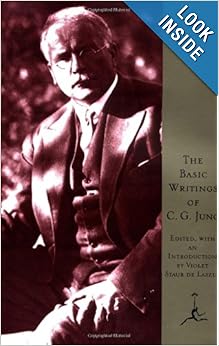






![@[113977738612372:274:Leonard Woolf] was born on this day in 1880. In Sowing (1960), the first volume of his autobiography, Woolf describes his first glimpse of eighteen-year-old Virginia Stephen, accompanied by her sister, Vanessa: "I first saw them one summer afternoon in Thoby's rooms; in white dresses and large hats, with parasols in their hands. Their beauty literally took one's breath away.... They were at that time, at least upon the surface, the most Victorian of Victorian young ladies, and today what that meant it is almost impossible to believe or even remember.... Virginia and Vanessa were also very silent and to any superficial observer they might have seemed demure ... [but] the observant observer would have noticed at the back of the two Miss Stephens' eyes a look which would have warned him to be cautious, a look which belied the demureness, a look of great intelligence, hypercritical, sarcastic, satirical." Source: http://ow.ly/r9mnF](http://fbcdn-sphotos-c-a.akamaihd.net/hphotos-ak-prn2/s403x403/1466194_567650603307294_1039156459_n.jpg)













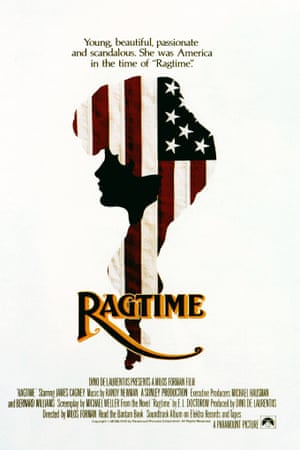















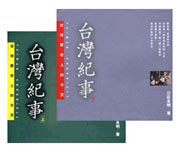
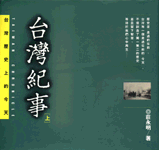

 十九世纪是工业革命的时代。随着资本主义在西欧各国大行其道,资产阶级意识形态跃居统治地位,功利和实用成为社会崇尚的价值。萨特在《什么是文学》中 曾阐述十九世纪作家与资产阶级的关系。资产阶级把作家看成一种专家,不希望他如同在过去时代那样去思考社会秩序,只要求他阐述一些心理规律,让读者——主 要是资产者——分享他对人的内心世界的实际经验。而由于写作的本性是自由,作家需要维护形式自由。这就产生矛盾。最优秀的作家拒绝与资产阶级合作,他们吹 嘘自己斩断了与资产阶级读者的一切联系。但是他们的决裂只能是象征性的,因为只有资产者读他们的书,能够给予他们荣耀。当
十九世纪是工业革命的时代。随着资本主义在西欧各国大行其道,资产阶级意识形态跃居统治地位,功利和实用成为社会崇尚的价值。萨特在《什么是文学》中 曾阐述十九世纪作家与资产阶级的关系。资产阶级把作家看成一种专家,不希望他如同在过去时代那样去思考社会秩序,只要求他阐述一些心理规律,让读者——主 要是资产者——分享他对人的内心世界的实际经验。而由于写作的本性是自由,作家需要维护形式自由。这就产生矛盾。最优秀的作家拒绝与资产阶级合作,他们吹 嘘自己斩断了与资产阶级读者的一切联系。但是他们的决裂只能是象征性的,因为只有资产者读他们的书,能够给予他们荣耀。当




























![「 In a poignant essay, renowned neurologist @[212505698805486:274:Oliver Sacks] reveals he has an incurable cancer: http://cnn.it/1Acnfdb 」](http://fbcdn-sphotos-e-a.akamaihd.net/hphotos-ak-xpf1/t31.0-8/p403x403/10629454_10153373658666509_4647708670238208587_o.jpg)



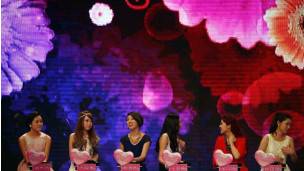 中國眾多的婚介交友節目之一。
中國眾多的婚介交友節目之一。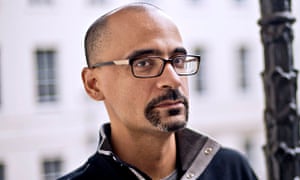




![「 'The Little Mermaid' from 'Fairy Tales ... Illustrated by Arthur Rackham [and selected by him]', 1932 」](http://scontent-tpe1-1.xx.fbcdn.net/hphotos-xfp1/v/t1.0-9/s851x315/11825217_10153545052882139_6652384222486439343_n.jpg?oh=e8abbc5f1689895f280b64da4fc13a1a&oe=563DF84A)
![「 'The Little Match Girl' from 'Fairy Tales ... Illustrated by Arthur Rackham [and selected by him]', 1932 」](http://fbcdn-sphotos-e-a.akamaihd.net/hphotos-ak-xat1/v/t1.0-9/s851x315/11230657_10153545057297139_8449830844680571618_n.jpg?oh=d568c9deb33e8fc4ca94dac8cd5e9bc7&oe=56398765&__gda__=1447360868_af68a623daeec741a8f1b2537ca99a27)




 廖亦武呼吁世界舆论更多地关注底层受难人士
廖亦武呼吁世界舆论更多地关注底层受难人士 

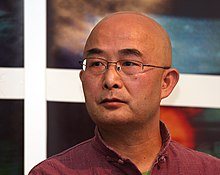

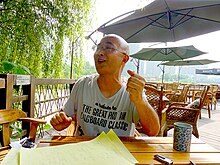

He had determined that there was to be no conversation about her progressive cancer or the fact that she lay dying. Her experience was unacceptable yet the impasse dreadful and ethically troubling.I found myself thinking of a former patient who came into hospital dying of liver failure from metastatic bowel cancer. Her jaundiced skin was practically glowing and she had a resulting insatiable itch. There was not a single comfortable position she could find and it soon became clear that that she needed continuous sedation for comfort. But before I sedated her I needed to be sure that she understood her terminal condition, difficult given that the liver failure was causing agitation. The problem was that her husband was permanently stationed at her bedside and would not hear of me mentioning any bad news to the patient.